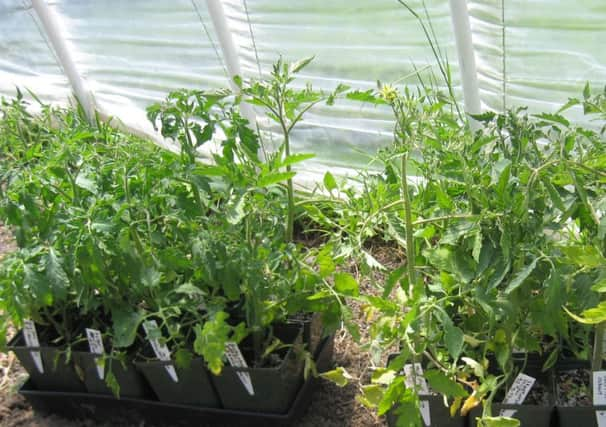Brian Kidd: How to grow the perfect tomatoes


Think about temporary shading because if you spray the glass with shading emulsion the sun will never return and in the autumn you’ll have to clean it off.
The easiest form of shading is large sheets of newspaper clipped to the canes or strings with a peg. Do this on mornings when it will be hot and take them off when it’s dull. Keep the temperature moderate all summer and the fruits will set properly.
Advertisement
Hide AdAdvertisement
Hide AdShading, particularly when the flowers are appearing, helps prevent pollen overheating. Too hot and the pollen grains, which are live cells, die, the flowers fall off and leave pea-sized fruits.
Whichever planting method you use, water in the late evening from now on. Plants absorb water better at night. Once the first truss of fruits is pea-sized, add a quarter-strength liquid food to the water each time you water. To get even growth and good quality fruit which will be tastier, use a food especially formulated for tomatoes.
Regular feeding as suggested will ensure the fruits aren’t too acidic and have more flesh, rather than a lot of seeds and hardly any flesh.
Keep greenhouse windows and the door open when hot. Keep cats and birds out by using wire mesh in the doorway. Don’t be too worried about a light breeze, it will help pollination, but tomatoes don’t like cold draughts. Rapidly-changing temperatures cause poor pollination.
Advertisement
Hide AdAdvertisement
Hide AdIf you can, at lunchtime give all the strings or canes supporting the plants a sharp tap a couple of times. You will see pollen falling off on to blooms lower down.
If the fruits turn brown around the scar where the flower was borne, it’s because of poor watering. Overcome this by watering during the evening rather than when you feel like it. Add a tiny amount of calcium nitrate.
Later in summer the leaves will start to deteriorate. Look out for brown patches which appear overnight. This is tomato blight and can be remedied by spraying during the evening with copper fungicide.
Whitefly is worst of all, but it can be controlled. Put sticky cards at the plants’ tips and move them up every week to help reduce the population. If they don’t work well, shake the plants regularly. Just one whitefly trapped on the sticky surface means you have stopped several hundred being born.
Advertisement
Hide AdAdvertisement
Hide AdLeave leaves on the main plant stems when green. They’re there to produce energy to swell the fruits so don’t remove them. Taking them off does not help ripen the fruit – it’s warmth and potash which does that.
The final tip is to alter feeding when it’s hot. Change the feed to one which is lower in potash. If you continue with high potash food, tomatoes will be hard on one side or have unripened lumps in the middle. Listen to the weather forecast.
TIP OF THE WEEK
Spring flowering shrubs and hedges need to be cut back. If you take green waste to a recycling centre you’ll be able to get more in the car if the material is cut up so it can be put in large plastic sacks.